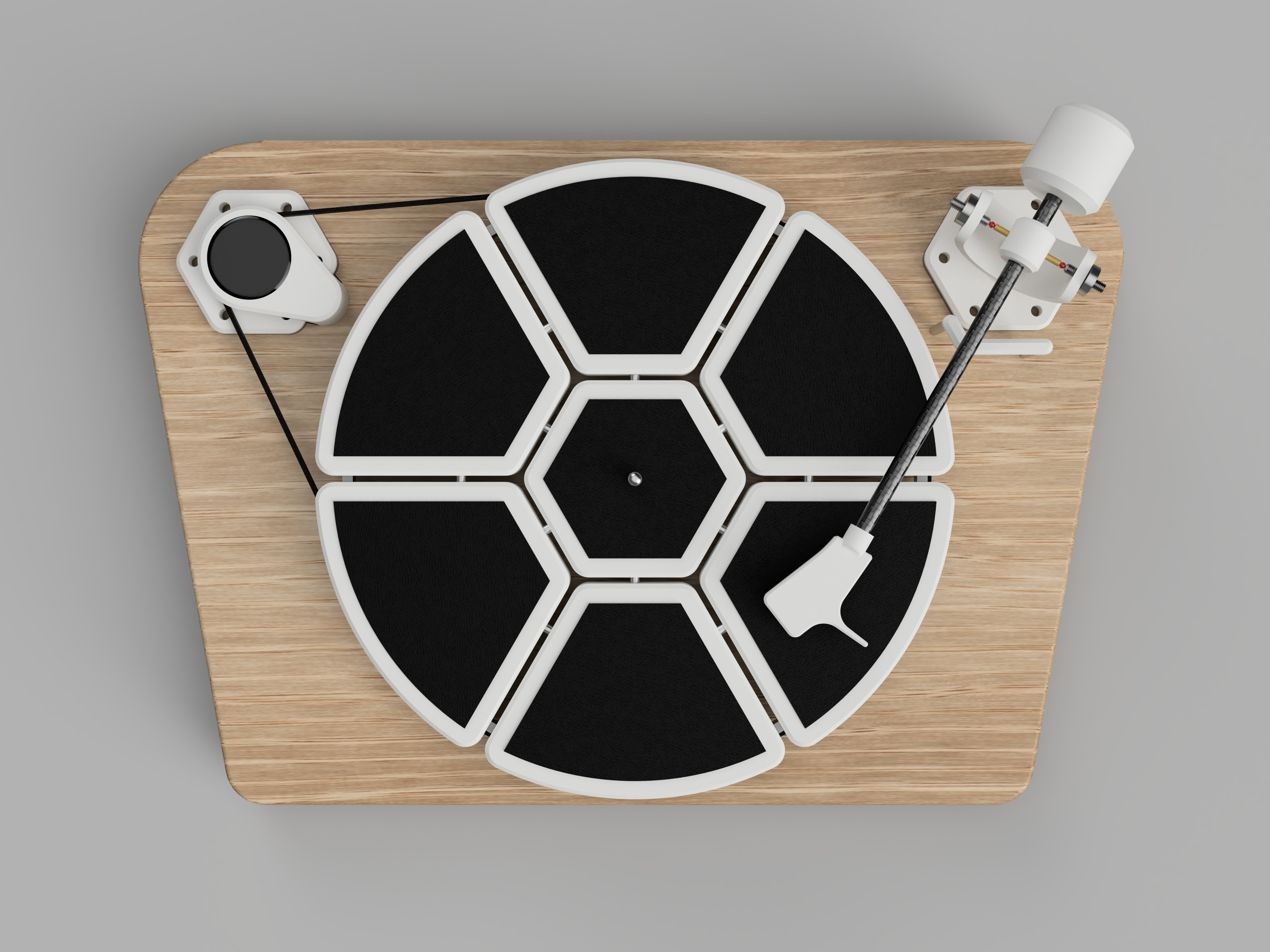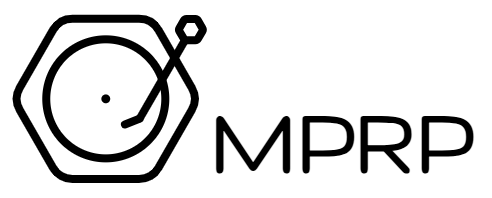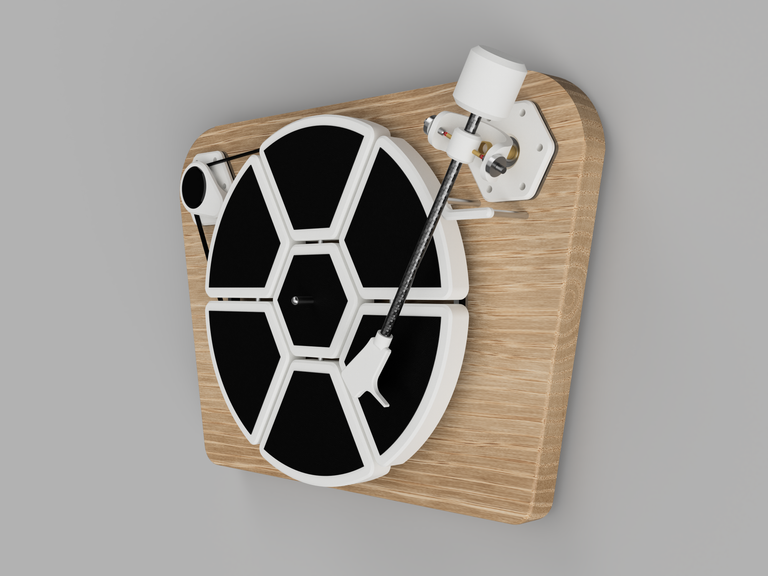
Okay, so what are we building exactly?
My goal is to design and build a vertical record player, which may be built using trivial parts and tools, plus a lot of 3D printing, hence the project name -- MPRP for Mostly-Printed Record Player. Above and below are renders of what it might end up looking like.
Oh yes, and it will be fully and truly open-source, with no strings attached.
Please note that the renders are more an art than an engineering at this stage, but it is roughly what I am aiming for.
Refer to a Design Philosophy page for details on my constraints and targets. Here I will try my best to briefly list the features I am aiming for in this build:
Weighted and balanced platter
The platter consists of separately-printed central hub and six radial sectors, rigidly connected together by a mesh of steel rods. Each component is sized to fit a bed of a even a small 3D-printer like A1 Mini.
Each part of the platter is filled with either a resin- or a cement-based filler, which not only gives them weight, but also further secures connecting rods. There are placements on the back of each sector for additional weights to be added for balancing purposes.
Central hub incorporates a number of alignment screws allowing to fine-tune the angle of the platter in relation to its axle, to minimise wobble while spinning.
As you can see, the design approach taken is to accept imperfections while manufacturing, but to include enough of adjustment features to allow offsetting those imperfections post-manufacture.
BLDC drive and electronic speed control
The platter will be belt-driven by a relatively cheap gimbal BLDC motor controlled with FOC. This method based on precise real-time rotation speed measurement, which means exact platter rotation speed will be guaranteed without any need for calibration or adjustment.
Automated tonearm lift
The build will include a motorised tonearm lift. Angle position of the tonearm will be constantly monitored and the lift will engage automatically to remove the arm from the record if no movement is detected for a period of time.
Tonearm may also be lifted or lowered manually via:
Touch screen control
Yup, that black circle above the driving pulley is a touch screen. I will probably spend most of my design time allowance coding the UI for this baby, but I want it to be real slick.


